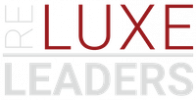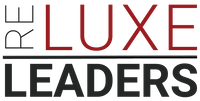In the intricate world of high-end real estate, precision is non-negotiable. Luxury real estate marketing analytics offers elite brokers a clear edge, moving beyond intuition to a disciplined, data-driven approach that drives measurable results. For leaders navigating the pressures of market saturation, shifting buyer intent, and the unyielding demand for ROI clarity, analytics are no longer optional—they are foundational.
The strategic imperative is clear: mastering luxury real estate marketing analytics transforms campaigns from broad outreach to targeted impact. It enables real-time decision-making, effective resource allocation, and sustainable growth. This article presents a practical framework for leaders committed to harnessing advanced analytics to scale their luxury business with precision and confidence.
Understanding the Stakes: Why Analytics Matter in Luxury Real Estate
Luxury markets are uniquely complex. UHNW clients expect seamless, tailored experiences, and the competition for their attention is intense. Traditional marketing metrics offer broad strokes but fail to capture nuanced buyer behaviors or shifts in intent. Utilizing luxury real estate marketing analytics means digging deeper—harnessing predictive analytics luxury real estate tools, accessing real-time data, and segmenting with surgical precision.
Consider a boutique brokerage that integrated predictive analytics into their marketing stack and observed a 30% increase in qualified inquiries, while reducing overall marketing spend by 18%. Such data-driven approaches elevate quality over quantity, essential when the cost per qualified inquiry luxury real estate campaigns can reach thousands of dollars.
Advanced Micro-Segmentation: Beyond Demographics
Effective luxury marketing begins with understanding the audience—not just in broad demographics but nuanced segments based on behavior, preferences, and purchase drivers. Micro-segmentation luxury marketing, powered by analytics, identifies discrete buyer personas, allowing for hyper-personalized messaging that resonates.
This methodology extends beyond surface attributes, incorporating variables like digital engagement patterns, offline touchpoints, and lifestyle markers sourced from CRM integrations. Combining these data sets with third-party market intelligence creates a composite client view unrivaled in precision, optimizing each campaign for maximum impact.
Deploying Real-Time Campaign Optimization to Capitalize on Opportunities
Luxury campaigns live and die on timing. Leaders employing real-time campaign optimization leverage dashboards that monitor engagement metrics instantaneously, enabling swift allocation of budget and creative assets where they perform best.
In practice, this means adjusting digital ad spend across platforms within hours of data collection, refining email drip sequences based on open and click-through rates specific to UHNW segments, and recalibrating targeting filters to exclude underperforming subsets. Such agility preserves marketing dollars while increasing ROI measurably.
Building a Proprietary Analytics Framework for Prioritization
Without a clear framework, even the most sophisticated data becomes noise. Developing a proprietary model designed for luxury real estate marketing prioritizes key performance indicators aligned to strategic goals. For example:
- Luxury Buyer Intent Analysis: Measuring progressive engagement signals, from initial inquiry to property tours.
- Cost Per Qualified Inquiry: A high-value metric reflecting campaign efficiency.
- Revenue Attribution: Assigning income to specific campaigns and channels with precision.
RE Luxe Leaders® recommends integrating these metrics into a unified scorecard updated weekly to inform leadership decisions. This disciplined approach enables reliable forecasting and continuous improvement.
Technology Stack Recommendations for Effective Luxury Data Utilization
Implementing real-time dashboards and predictive analytics requires a deliberate technology stack tailored to luxury real estate’s nuances. Leaders should consider platforms that enable seamless integration of multiple data sources, including CRM, Google Analytics, social platforms, and offline client data.
Examples include:
- Tableau or Power BI: For customizable visualization and reporting.
- Salesforce with predictive add-ons: To blend client management and forecasting.
- Advanced digital advertising platforms: Supporting dynamic audience segmentation and bidding strategies.
Successful brokerage operators also invest in training their marketing and leadership teams to interpret data critically, fostering a culture of accountability and insight-driven creativity.
Integrating Offline and Digital Data for Holistic Campaign View
Luxury client experiences span high-touch offline interactions and sophisticated digital journeys. Combining these data streams is essential for full-funnel measurement. For example, integrating offline client visit histories, private event attendance, and bespoke communication records with digital clickstream analytics closes the performance loop.
Brokerages adopting this hybrid model report clearer attributions for marketing spend and enhanced understanding of buyer readiness. Achieving this requires robust data governance and collaboration between sales, marketing, and operations teams—areas where many firms stumble without expert advisory.
Case Study: Transforming Lead Quality and Revenue Through Analytics
A leading multi-market brokerage partnered with RE Luxe Leaders® to overhaul its marketing analytics capabilities. Prior to engagement, the leadership struggled with vague ROI metrics and inconsistent lead quality, despite heavy digital investment.
Within six months of implementing a tailored analytics framework focusing on predictive buyer intent signals and real-time optimization, the firm saw:
- 25% increase in qualified lead conversion rates.
- 22% reduction in cost per qualified inquiry luxury real estate campaigns.
- 18% uplift in overall sales revenue attributed directly to analytics-enhanced campaigns.
These results validated the strategic pivot from intuition-driven marketing toward disciplined, analytics-based leadership.
Conclusion: Analytics as the Cornerstone of Sustainable Luxury Brokerage Growth
For elite luxury real estate leaders, success hinges on transforming complexity into clarity. Incorporating luxury real estate marketing analytics into core operations is not about chasing data for data’s sake. It is about distilling insights that protect legacy, amplify performance, and safeguard time freedom.
Navigating talent acquisition, technology adoption, and data integration demands strategic focus and rigor. Those who master these disciplines position their brokerages to excel amid evolving market dynamics, ensuring their leadership—not just their listings—endures.
For leaders ready to elevate their luxury business by harnessing advanced marketing analytics strategies, guidance from seasoned experts is indispensable.
Book a confidential strategy call with RE Luxe Leaders™
For additional insights on data-driven marketing strategies, consider McKinsey’s analysis of AI and data-driven marketing and NAR’s resources on real estate technology and innovation.





